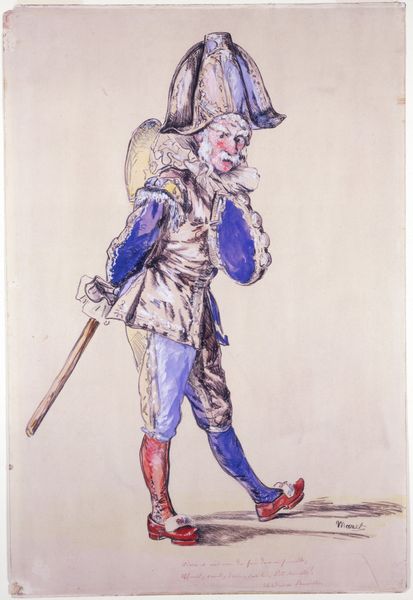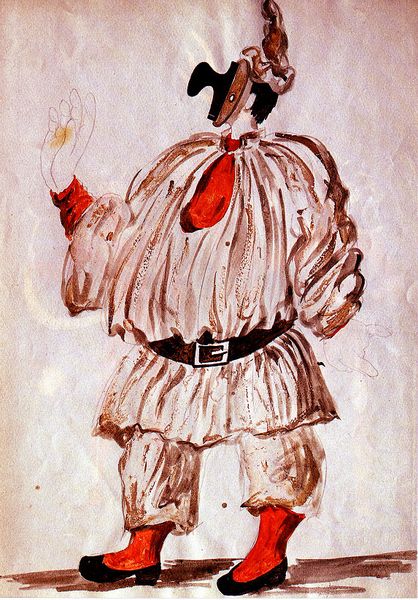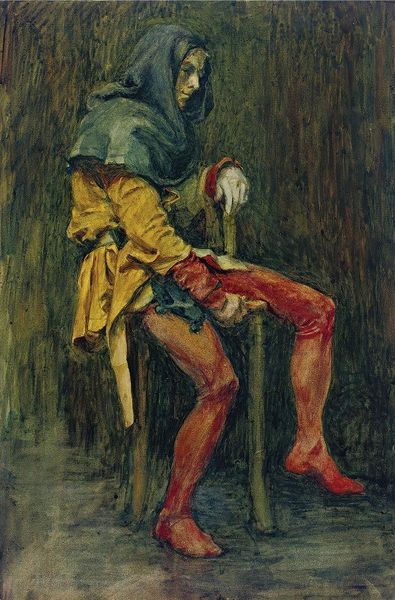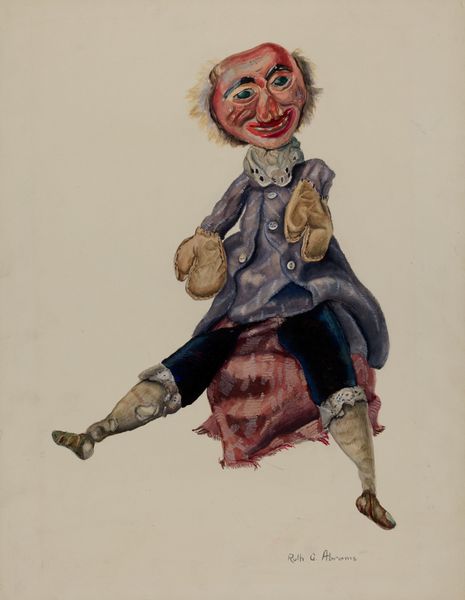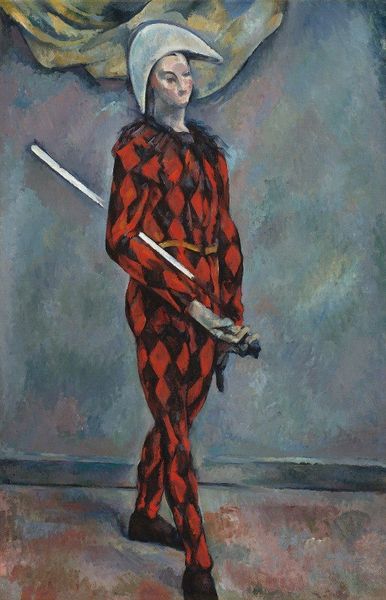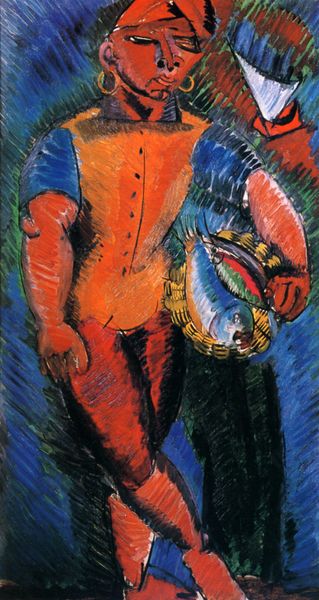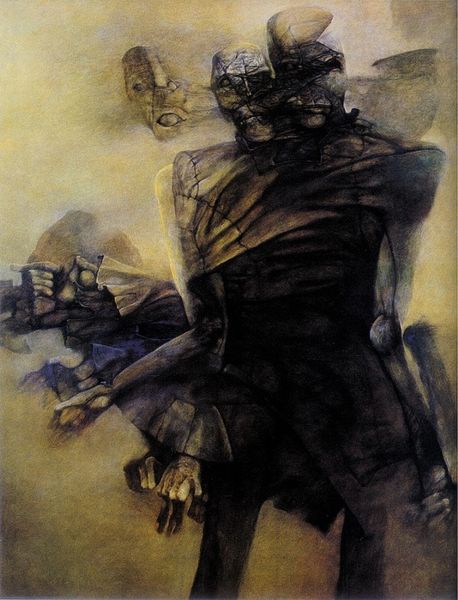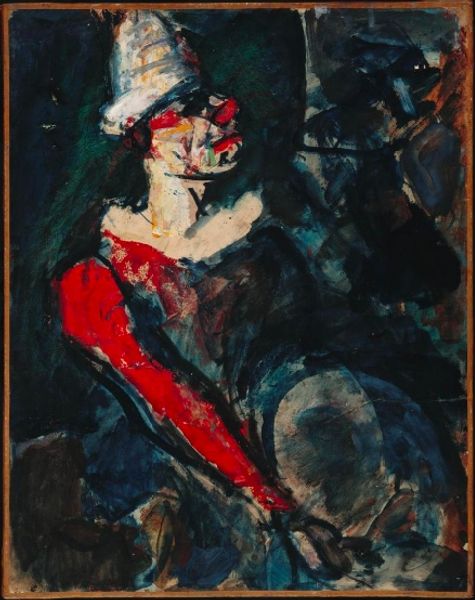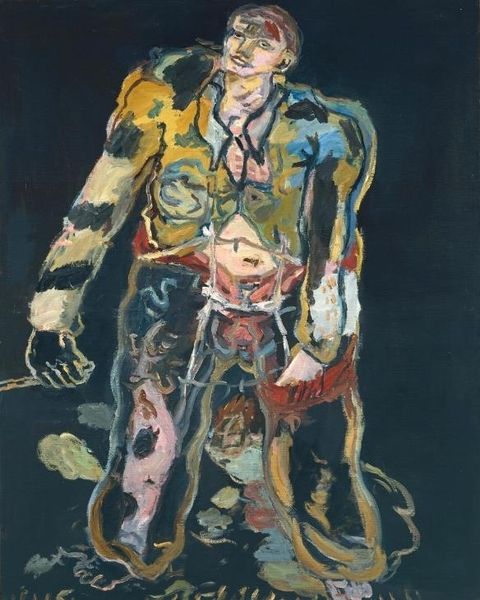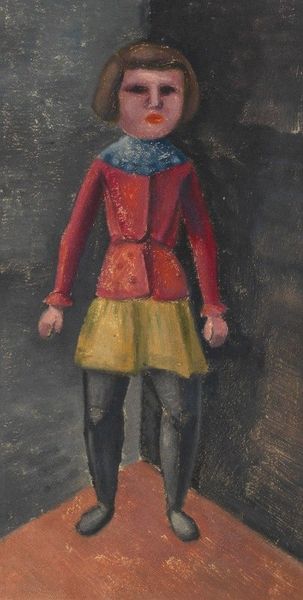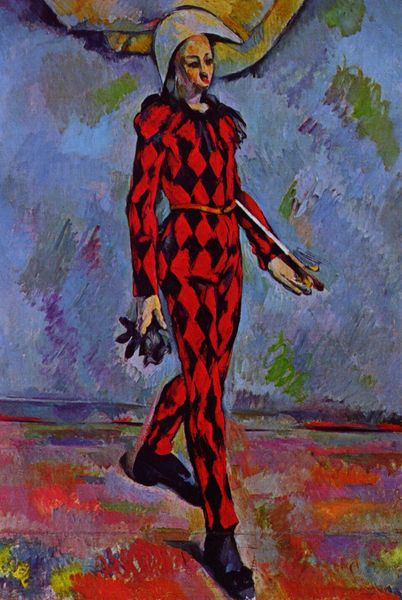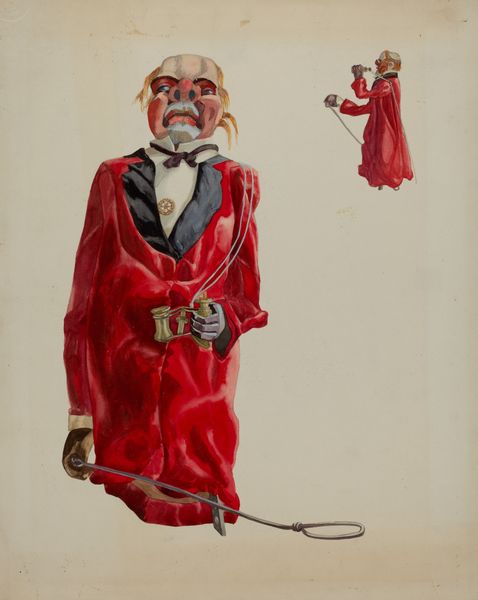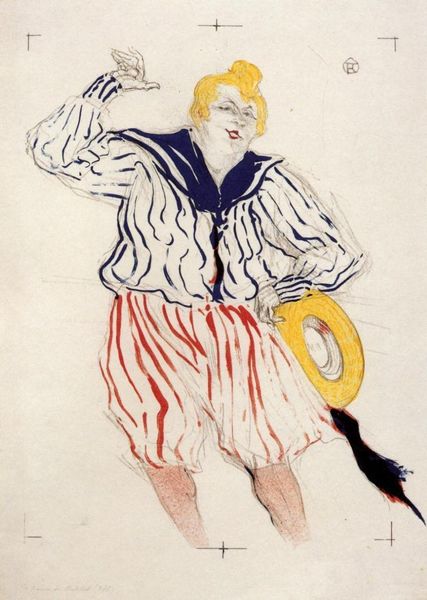
painting, oil-paint
#
portrait
#
painting
#
impressionism
#
oil-paint
#
painted
#
oil painting
#
costume
Dimensions: 50.2 x 34.6 cm
Copyright: Public domain
Curator: Let's look at Édouard Manet's "Polichinelle" from 1873, an oil painting currently held in a private collection. Editor: It’s surprisingly muted for a clown. I'm struck by the contrast of the vibrant costume against that sombre background – the materiality feels almost theatrical, but in a restrained way. Curator: It’s crucial to consider the commedia dell'arte tradition from which Polichinelle originates. The character is usually a figure of subversive wit, embodying a carnivalesque defiance of social norms. How do you read that rebellious nature in this depiction? Editor: Well, I'm interested in how Manet manipulates the oil paint itself to evoke a sense of disquiet, right? Look at how the colors bleed, how the impasto suggests hastily applied makeup. There’s something unstable, almost frantic, in the facture itself. Curator: That frenetic energy you observe might reflect the anxieties of the time. France was recovering from the Franco-Prussian War, and the Third Republic was just finding its footing. The clown, often a symbol of chaos and satire, could represent this social unease. The visible brushwork reflects a modern break with the conventions of the time. Editor: Precisely! The rough texture speaks to the modern industrialized production of paint, the readymade tubes altering how artists engage with their craft, creating this tension with academic polish. It underscores the performative nature of both art and identity. Curator: Indeed. Manet’s decision to depict Polichinelle may not only represent a critique of contemporary society but also engage with questions of identity and representation in a period of dramatic social upheaval. This challenges us to examine power structures operating within the cultural and artistic realms. Editor: Right. For me, Manet's painting isn’t simply *about* Polichinelle; it’s a commentary on the artifice and the means of production informing identity, revealing how societal conditions shape our understanding of self and representation through artmaking itself. Curator: An illuminating intersection of materiality and meaning, placing "Polichinelle" in its rightful historical context. Editor: It encourages a close reading of technique and substance in relation to broader social landscapes.
Comments
No comments
Be the first to comment and join the conversation on the ultimate creative platform.
